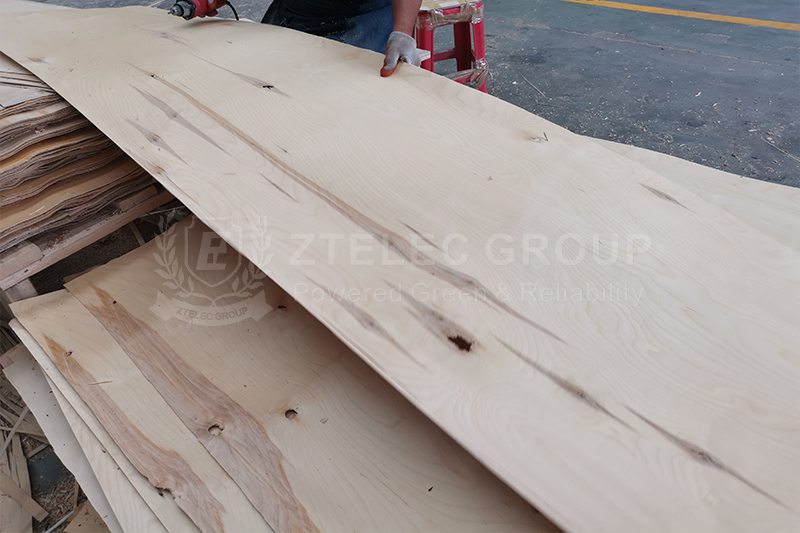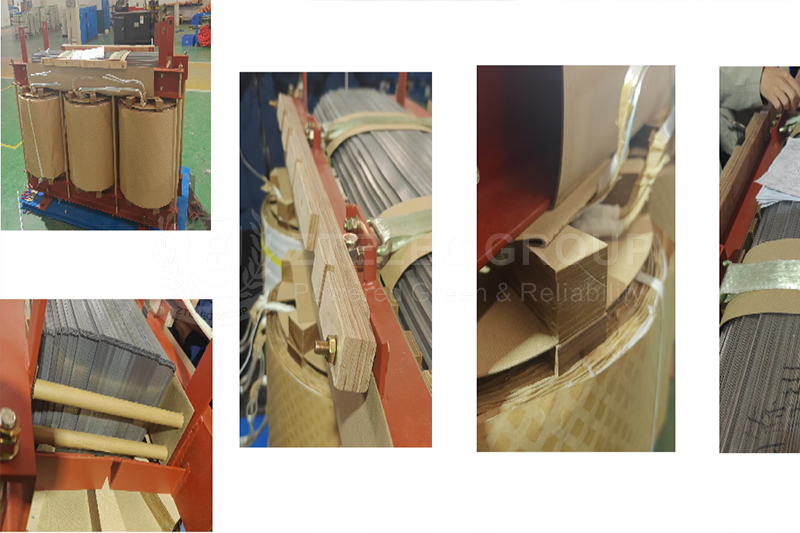In the power transmission and distribution system, the oil-immersed transformer is the core equipment. Its structure is sophisticated and complex, and laminated wood, as a high-performance composite material, has unique characteristics and undertakes the two core functions of electrical insulation and mechanical support. It is a key component in the design and manufacture of transformers. Next, the important role of laminated wood is analyzed in depth from four aspects: electrical insulation performance, mechanical support, environmental adaptability and durability, economy and processing convenience.
The manufacturing process of laminated wood determines its excellent insulation performance. It is made of multiple layers of wood and high-performance insulating adhesives, which are pressed under high temperature and high pressure. This process makes the internal structure of laminated wood dense, and the gas and moisture content is extremely low. More importantly, its dielectric constant is similar to that of transformer oil. Therefore, in a high-voltage environment, laminated wood has excellent and stable insulation performance.
When the oil-immersed transformer is in operation, there are windings and components with different voltage levels inside. Once the insulation fails, electrical breakdown and short circuit may occur. Laminated wood sheet can effectively isolate these components to ensure that the current flows along the intended path. For example, in key locations such as transformer winding pressure plates and iron yoke pads, laminated wood, with its excellent insulation capabilities, protects the safe operation of the transformer and builds a solid insulation barrier for power transmission.

When the transformer is running, the winding will generate huge mechanical stress due to electromagnetic force. At this time, laminated wood becomes an ideal material for fixing and supporting the winding with its high mechanical strength and hardness. Laminated wood is light in texture but high in strength. It can not only prevent the displacement and deformation of the winding during operation, but also reduce the overall weight of the transformer and reduce the difficulty of transportation and installation.
In practical applications, the pressure plate made of laminated wood plays a significant role. It can firmly fix the coil, and even if the transformer is in continuous operation for a long time, it can also ensure the stability of the structure and provide solid mechanical guarantee for the reliable operation of the transformer.
Laminated wood performs well in environmental adaptability and durability. It has excellent compatibility with transformer oil, and long-term immersion does not affect the oil quality. It is not easy to twist and crack. Moreover, it has good heat resistance and can work stably for a long time in a high temperature environment of 105℃, which is suitable for the high temperature environment inside the transformer.
In addition, laminated wood board has low hygroscopicity and good thermal stability. This enables it to maintain stable performance in humid environments or conditions with large temperature changes, avoiding performance degradation due to environmental factors, thereby extending the service life of the transformer and reducing equipment maintenance costs and replacement frequency.

From the perspective of economy and processing, laminated wood has more advantages than traditional materials such as steel plates and insulating paperboard. First, it has lower cost and can reduce the manufacturing cost of transformers. Second, it has excellent processing performance. Through common processes such as cutting, drilling, and grinding, it can be made into parts of various shapes and sizes to meet the complex structural design requirements of transformers.
In actual production, laminated wood sheet often replaces materials such as epoxy glass cloth. This not only reduces production costs, but also improves production efficiency, allowing transformer manufacturers to obtain better economic benefits while ensuring product quality.
Laminated wood performs well in electrical insulation, mechanical support, environmental adaptation, and economic processing, and is an indispensable key material for oil-immersed transformers. With the development of the power industry, the requirements for transformer performance and reliability are getting higher and higher. Laminated wood will continue to play an important role in the future, and it is also expected to achieve performance improvement through technological innovation.
If you need our products please write down any questions, we will reply as soon as possible.
There are three ISO certificates for quality certification. The certificates will be shown later. ISO
After receiving the advance payment, the production cycle is 15-25 days. And the transportation cycle should be calcul……
We supply with installation guide and user manual for each transformer. If you do not understand them. We will offer v……